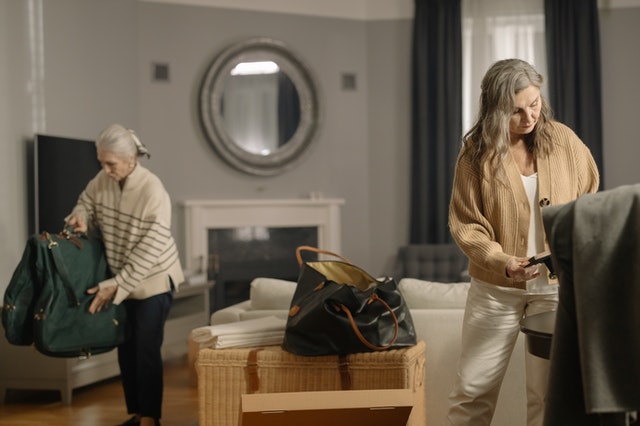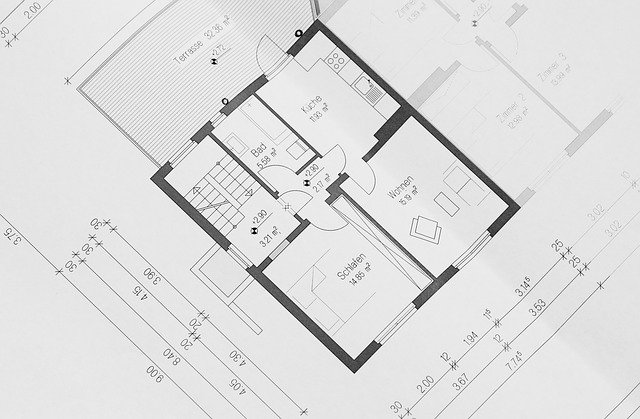 If selling your home is on the horizon, here are some moving management and organizational tips to help you stage for a quick and successful sale.
If selling your home is on the horizon, here are some moving management and organizational tips to help you stage for a quick and successful sale.
Moving can be a stressful process, particularly when it comes to selling a home. With summer on the horizon and so many looking for new homes across the country, staging has become more important than ever. When potential buyers enter a home or virtually tour photos on a real estate listing platform, they not only want to see a future there, but they also want to be sure that the space is clean and organized. A tidy home can make it sell for more money as well as attract more buyers. While hiring a moving manager or home organizing services can take some of the work off your plate, there are ways you can both organize and show off the space yourself, too.
Organize the exterior
The first impressions of most homes on the market come from the outside, which makes a neat, attractive exterior all the more important. Any red flags on the outside of the home can send a buyer in the other direction before even entering the house. That said, fresh landscaping, flowers, groomed trees, and any paint touch-ups can make a home look brand new. This will also hint to buyers how dedicated you’ve been in terms of maintenance, inside and out. Outdoor furniture, a freshly sealed driveway, or an updated porch can help the home sell faster and for more money.
Highlight home office space
In this new age of remote work, home offices have become staples to everyday life for many. Creating a designated, productive workspace can help a buyer who works from home see their lifestyle fitting with the house. Keep in mind that professionals prefer certain aspects of a home office, like natural lighting, storage space, and distance from heavily trafficked areas of the house. You can also stage a multifunctional space that can serve as a home office, craft room, laundry room, or spare bedroom.
Cut back on furniture
Believe it or not, some of a home’s most valued furniture pieces may not be beneficial throughout the staging process. Extra end tables, coffee tables, or chairs can make the space look cluttered and claustrophobic. Remove these to open up the space. Avoid putting furniture in front of focal points like fireplaces or built-ins so they’re easily visible and accessible. When choosing which pieces to keep or stow away, think about buyers walking through the home and how easy the space is to tour.
Coordinate closet space
Organized closet space is a high priority for many buyers. Before they tour the bedrooms, remove any unnecessary articles of clothing and other clutter to make the closet appear larger. Add shelving where necessary to maximize the space, and stage with storage bins or compartments that show visitors how it can be efficiently organized. Shoe racks, drawers, and over-the-door storage can also help buyers see how much of their belongings they can store in the closet. Don’t forget to keep the home well-ventilated for great air quality and a fresh aroma for in-person tours.
Deep clean
A tidy home isn’t as effective without a deep clean. A major factor that turns buyers away from homes for sale is cleanliness. It indicates how well you tend to the home, and is instrumental in the visitors’ experience. Cleaning every square inch of the home is vital before allowing a home to be photographed or toured in person. Dust or scrub every square inch from the floor to the ceiling so that buyers will have no critiques. Also remember that pets, their toys, or their furniture can store some unpleasant smells that a handful of buyers will disapprove of, so be sure to take those out of the house and eliminate any pesky pet odors.
De-personalize
While staging, be sure to reduce the amount of personal items in the home. Family photos, mementos, art projects, personal hygiene items, and clothes can all add to a cluttered home. Not only that, but having these items visible can make it very difficult for buyers to imagine the home as their own and connect to the space. Instead, fill some of the space with neutral decor, books, plants, etc. Arrange any built-in storage, shelving, or wall space with items that illustrate how the space can be used, while leaving it a blank canvas for potential buyers.
clothes can all add to a cluttered home. Not only that, but having these items visible can make it very difficult for buyers to imagine the home as their own and connect to the space. Instead, fill some of the space with neutral decor, books, plants, etc. Arrange any built-in storage, shelving, or wall space with items that illustrate how the space can be used, while leaving it a blank canvas for potential buyers.
Hire a professional
If you’re inexperienced when it comes to moving, thankfully, there are a number of moving and organization experts that can make the transition smoother every step of the way. To make the process easier, here are some examples of professional services you can use:
- Packing and unpacking services: carefully packing items, trash removal, delivering packing boxes and materials, etc.
- Senior moving specialist: guiding your downsizing/transition while catering to the special needs of your senior loved one
- Estate clearing: providing itemized lists of keepsakes, shipping items to family members, selling valuable pieces, etc.
- Virtual organizers: online sessions with organization experts to tackle your home one room at a time
Conclusion
Selling your home doesn’t mean simply listing it on the market and hoping for the best. It takes a lot of thought and hard work throughout the staging process. Maintain an organized home, take advantage of experts, and consider some of these organizational tips for an efficient home sale.
How can we help you?
Photo Credits: Photo by Bench Accounting on Unsplash; Photo by Bench Accounting on Unsplash; Photo by Jason Briscoe on Unsplash














 organizational system or strategy in place will help greatly in getting the job done productively. One smart way to do this is by doing one room at a time, and tackling the rooms that need decluttering the most first. This allows you to break up the task of decluttering into smaller, more attainable goals.
organizational system or strategy in place will help greatly in getting the job done productively. One smart way to do this is by doing one room at a time, and tackling the rooms that need decluttering the most first. This allows you to break up the task of decluttering into smaller, more attainable goals.



 Make a floorplan
Make a floorplan  In the 1993 movie Groundhog’s Day an arrogant journalist named Phil Ryerson finds himself stuck in a supernatural cycle where, for reasons unknown to him, he must relive February 2nd indefinitely. Forced to repeat the same day in a snow-blanketed town that worships a rodent, eventually he loses his mind. Looking for the twin to a set of socks in a messy drawer can have a similar effect.
In the 1993 movie Groundhog’s Day an arrogant journalist named Phil Ryerson finds himself stuck in a supernatural cycle where, for reasons unknown to him, he must relive February 2nd indefinitely. Forced to repeat the same day in a snow-blanketed town that worships a rodent, eventually he loses his mind. Looking for the twin to a set of socks in a messy drawer can have a similar effect.  Get crafty!
Get crafty! 


